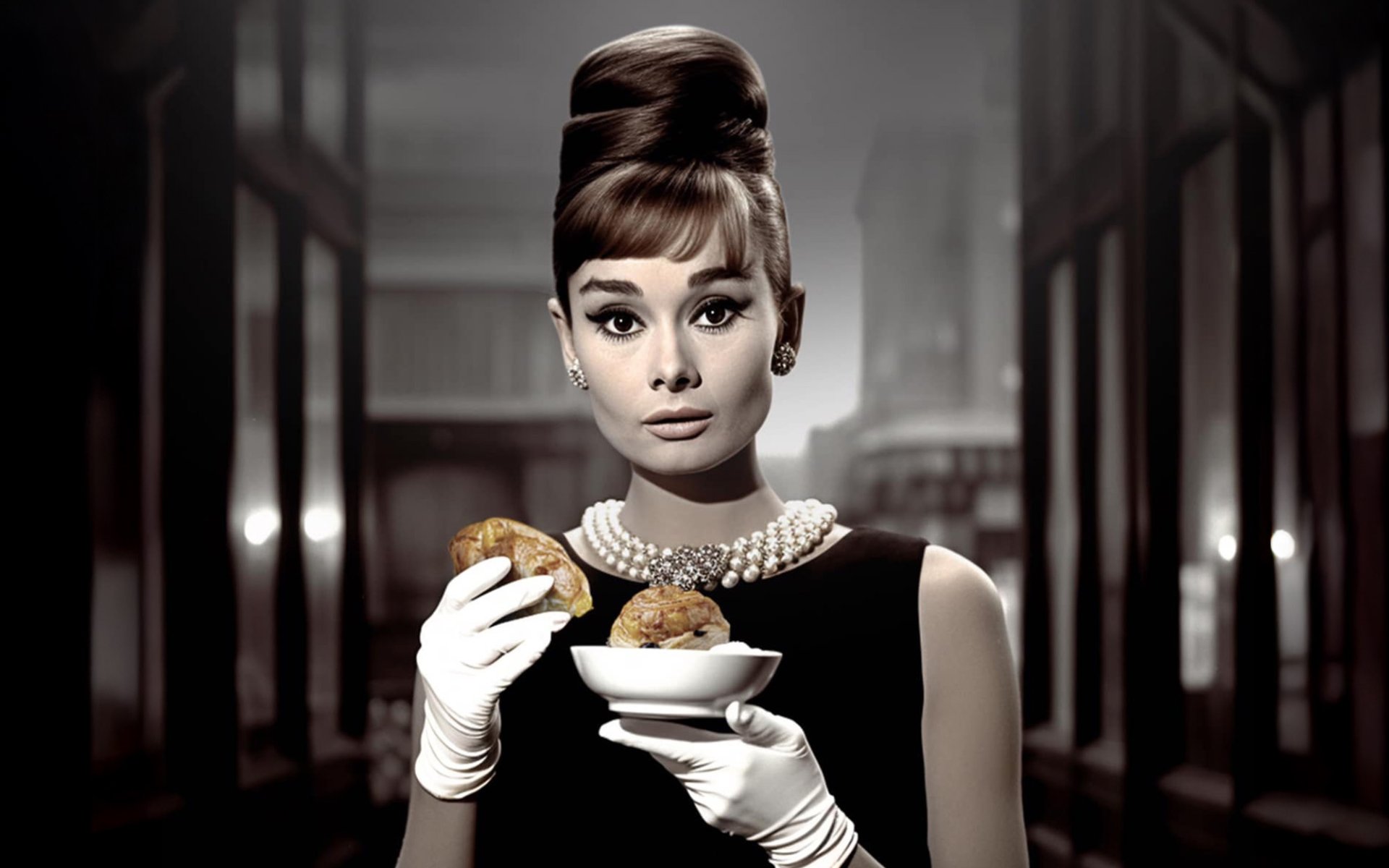Danish

In the world of baked goods, few pastries seamlessly blend a rich history with a captivating presence in popular culture quite like the "Danish" pastry. Known in Denmark as "Wienerbrød," it is more than just a delicious baked treat; it is a symbol of a baking tradition that has traveled through time and gained global renown after its memorable appearance in the classic film "Breakfast at Tiffany's."
Origin: From Bakers' Strikes to the Charm of Wienerbrød
The story of the Danish pastry dates back to the early 19th century. This beloved pastry is believed to have been introduced to Denmark by Austrian bakers who brought their skills and laminated dough techniques during a significant strike among Danish bakery workers in 1850.
Due to this strike, a bakery owner had to hire foreign workers to replace the striking local laborers. The workers hired were Austrian, and they introduced new baking cultures and recipes, particularly Viennese bread, which features a puff pastry-like dough. They began selling these Danish pastries, which quickly gained popularity and spread throughout Denmark.
After the strike ended, Danish bakers adopted the Austrian recipes and techniques, adapting them to Danish tastes and culinary culture. They increased the amount of eggs and fat (butter) in the dough, resulting in a richer, more buttery, and tender texture. This transformation led to the Danish pastry, or Danish baked goods, as we know them today, with unique characteristics that differentiate them from their original Viennese counterparts.
Transatlantic Journey: Danish in the United States
With its delicious taste and the delicate texture of its layered dough, created by repeatedly folding butter into the dough, the Danish pastry quickly gained popularity beyond Denmark's borders. In the late 19th century, many Danish immigrants who settled in the United States brought their beloved Danish pastry recipes with them, disseminating them within their communities in major cities. It rapidly became popular, and many American bakeries began selling this delightful pastry, making it a common breakfast and snack item in American households and gradually spreading it worldwide.
Danish and Hollywood: A Symbol of Elegance in Breakfast at Tiffany's
Due to its growing popularity, in 1961, this pastry appeared in the legendary film Breakfast at Tiffany's, starring Audrey Hepburn, becoming an iconic image recognized globally. The Danish pastry plays a significant role in the opening scene of the film, symbolizing casual elegance and unadorned luxury, much like the character of Holly Golightly, the mysterious and stylish socialite. In this iconic scene, she is seen in an elegant evening gown, casually enjoying a coffee and Danish pastry while window shopping outside Tiffany & Co. in the early morning stillness of New York City.
In Breakfast at Tiffany's, the Danish pastry not only tantalizes the senses with its appetizing appearance but also becomes a symbol of Holly Golightly's aspirational and independent lifestyle. The depiction of the delectable Danish pastry in the film added another layer of sophistication and charm to this universally beloved pastry. With its enduring popularity and global recognition, the Danish pastry has become an integral part of the culinary history of many countries and, ultimately, a cultural symbol associated with elegance and timeless classicism.
Danish Today: Diverse Shapes, Flavors, and Global Appeal
Today, Danish pastries are popular worldwide, available in various shapes, flavors, and fillings, including fresh fruits, jams, cream cheese, nuts, or chocolate, and often topped with powdered sugar and glazes. Regardless of how much time passes, this pastry continues to captivate taste buds around the globe. Its buttery aroma, crispy yet tender texture, and balanced sweetness ensure that the Danish pastry remains a classic baked good cherished by many, standing as a testament to the remarkable journey of a small pastry from a Danish bakery to the global stage, becoming an essential part of the world's culinary culture


